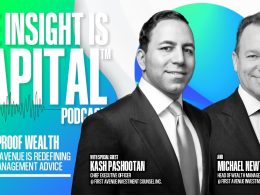Avoiding Pitfalls in Financial Decision Making
by Commonwealth Financial Network
 Have you ever stopped to think about why or how you made a decision? Was it your logic, intuition, emotion, pressure, or routine? Or were you simply following direction from someone else?
Have you ever stopped to think about why or how you made a decision? Was it your logic, intuition, emotion, pressure, or routine? Or were you simply following direction from someone else?
The truth is, we’re all subject to “noise” on a daily basis. Whether it’s the media, colleagues, friends, family, or even strangers—everyone has something to say and an opinion to give. But no matter what is happening around us, we are each responsible for the financial decisions we make. The question is, how do we protect ourselves from the inevitable traps along the way?
In “The Hidden Traps in Decision Making,” Hammond, Keeney, and Raffia highlight the dangers we face subconsciously or consciously when making decisions. In an industry that is driven by investors, emotions, and analysis, this is especially pertinent. Here, we’ll talk about some of those dangers and how creating “guardrails” can go a long way in avoiding pitfalls in financial decision making.
This concept may sound simple, but it’s easily taken for granted. If you have to decide between where to go for lunch and where to invest your retirement savings, for example, choosing lunch is indisputably the easier option. The point is that no matter what choices you’re faced with, you will likely cherry-pick what you want. As such, we all need to be cognizant of our personal decision-making pitfalls and then consider what’s really driving our decisions.
- Are you listening to your gut?
- Are you being influenced by someone or something?
- What is the root of the question?
- Did something happen in your past that you never want to repeat?
In your quest to be more aware in your decision-making process, there will be many traps—some of which occur subconsciously. Here are a few potential pitfalls to be mindful of, plus some tips for managing them.
The anchoring trap. This trap attaches to you like a heavy weight and then influences your decision. To illustrate how it might work, think of the investor who calls you because a friend told him that he should buy a stock or your clients’ reactions when a company's quarterly earnings fall short of estimates and the stock price drops.
Now, put yourself in the investor’s shoes. Stop, breathe, and evaluate. What is really happening? Is there a need to react, or are emotions in charge? In situations such as this, the following steps may be useful for you and your clients:
- Step 1: Identify the anchor. Figure out what is driving your reaction and try to take a different view. For example, is it that a friend told you to buy stock and he or she always knows what’s best? Do you feel pressed for time or that you’ll miss out on an opportunity?
- Step 2: Do your due diligence. When making an important financial decision, come up with your own opinion, but then be open to the opinions of others. Let’s say that earnings estimates drop for one quarter. Is it worth reacting? What caused the drop? Are you being influenced by the media hype and forecasted values based on historical numbers? (Keep in mind that there are factors besides a company’s P/E ratio that should determine its worth. The P/E ratio is only as good as a company’s accounting method, and every company has its own method, although they are typically governed by Generally Accepted Accounting Principles.)
- Step 3: Listen carefully and be open to all perspectives. This may mean fighting the urge to defend your initial thoughts before hearing what others have to say. Also, try to avoid conferring with only like-minded people. If you are truly looking to make an independent decision, then you need to ask contrarians for their thoughts.
The confirming-evidence trap. We subconsciously seek supporters and those who share the same point of view. Why? Fundamentally, you may already know what you prefer and are just looking for confirmation, or perhaps you've made a decision and now want buy in. It’s no revelation how this can be an issue!
Let’s look again at the investor in the example above who is thinking of buying stock. What will he do next? First, he may contact another friend and ask her what she thinks, making sure to lead the conversation to the outcome he wants to hear. If all goes well, the investor has the buy in from two friends and then hopes his advisor will solidify it. (Sound familiar?) The same goes for the news regarding a company's quarterly earnings: the stock price starts dropping and investors look for reasons to sell. As you know, this is when many investors end up selling low and buying high.
Again, what can you do if you find yourself in a similar situation?
- Step 1: Honesty is the best policy (especially with yourself). Try to seek out an independent opinion. If you get opposition? Be open minded, not defensive. Also, make sure any source is reputable, whether it’s a person or something you read online. Shocker, the Internet is not always right!
- Step 2: Do your research, and weigh your options. Making a pro and con list can help. Just don’t get stuck in the weeds and overwhelm yourself with research.
The status-quo trap. When we have too many options to choose from, it can be overwhelming. Plus, if we don’t feel comfortable with the material and want to do research, we might feel even less confident in making a decision. In the end, this leads many of us to do nothing at all. Keeping the status quo protects us from making the wrong decision and feeling the sting of failure.
So, what if our investor chose to do nothing when that stock price dropped? If the company is really a value-add and just had a bad quarter, he may have missed out on an opportunity to buy low and watch the stock rebound.
In scenarios such as this, it’s important to fight the tendency we have to remain stagnant and instead take steps to evaluate the situation.
- Step 1: Embrace your fear and remember your objective. Ask yourself what you could possibly gain and whether it’s worth the work. Everything worth fighting for comes with a price, so keep your eye on the prize and make a conservative effort to evaluate it.
- Step 2: Don’t default to the status quo. Set time aside to evaluate your options. For the investor who is considering the undervalued stock, for example, this means taking the time to research the company and contact those who may provide independent opinions.
These are just a few of the decision-making pitfalls that we all may fall into. To help yourself and your clients, the bottom line is to keep an open mind, know yourself and your personal drawbacks, and put guardrails in place to prevent yourself from losing out on opportunities.
What other pitfalls have you seen in financial decision making? How do you try to avoid them? Please share your thoughts with us below!
Commonwealth Financial Network is the nation’s largest privately held independent broker/dealer-RIA. This post originally appeared on Commonwealth Independent Advisor, the firm’s corporate blog.
Copyright © Commonwealth Financial Network















